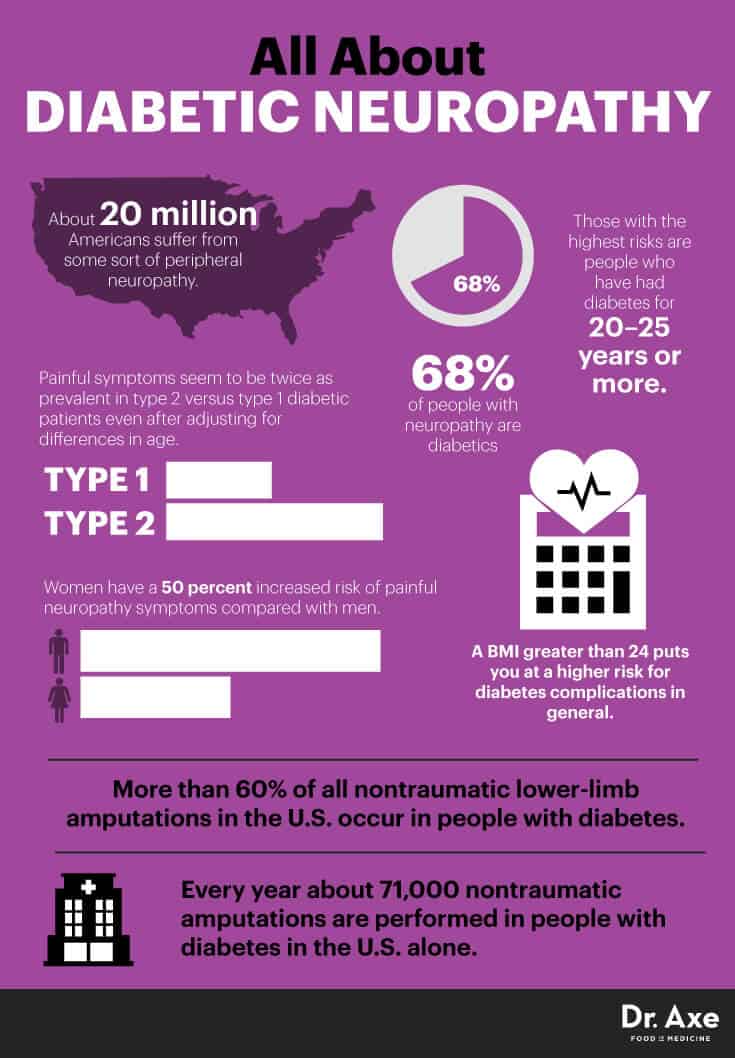This Dr. Axe content is medically reviewed or fact checked to ensure factually accurate information.
With strict editorial sourcing guidelines, we only link to academic research institutions, reputable media sites and, when research is available, medically peer-reviewed studies. Note that the numbers in parentheses (1, 2, etc.) are clickable links to these studies.
The information in our articles is NOT intended to replace a one-on-one relationship with a qualified health care professional and is not intended as medical advice.
This article is based on scientific evidence, written by experts and fact checked by our trained editorial staff. Note that the numbers in parentheses (1, 2, etc.) are clickable links to medically peer-reviewed studies.
Our team includes licensed nutritionists and dietitians, certified health education specialists, as well as certified strength and conditioning specialists, personal trainers and corrective exercise specialists. Our team aims to be not only thorough with its research, but also objective and unbiased.
The information in our articles is NOT intended to replace a one-on-one relationship with a qualified health care professional and is not intended as medical advice.
7 Natural Diabetic Neuropathy Treatments that Work
March 7, 2016

Diabetes itself is extremely common, affecting about one in every three adults in the U.S., and diabetic neuropathy is one of the most likely complications to develop as a side effect because high blood sugar levels affect nerve fibers throughout the body. Neuropathy is a pathological condition that encompasses more than 100 different forms and manifestations of nerve damage, both in people with diabetes and those without. (1)
Diabetic neuropathy (also sometimes called peripheral neuropathy) is the term for nerve damage caused by diabetes, a chronic condition that occurs when the body doesn’t use the hormone insulin properly. Neuropathy can form anywhere but is most likely to affect nerves running through the limbs, hands and feet.
Not every person with diabetes symptoms develops complications such as neuropathy, but many do. In fact, up to 60 percent to 70 percent of all diabetics experience some form of neuropathy. For some people, only mild symptoms develop from nerve damage, such as tingling or numbness in the limbs. But for others, neuropathy causes a good amount of pain, digestive issues, problems with the heart and blood vessels, the inability to go about life normally, and even death if major organs are affected badly enough.
Diabetic neuropathy can trigger a cascade of events that lead to even more serious complications. Just like with diabetes itself, there is no known “cure” for peripheral neuropathy, only ways to manage it and stop progression, similarly to the natural treatments for diabetes. It’s a dangerous problem to have, but fortunately most people are able to keep it under control by regulating their blood sugar levels, changing their diets and adopting healthier lifestyles overall, all of which help control their diabetes.
7 Natural Remedies for Diabetic Neuropathy
1. Manage Blood Sugar Levels
The very best thing you can do to help prevent or control neuropathy is to manage your blood sugar levels. Maintaining blood sugar consistently within a healthy range is the most important thing to prevent permanent damage to the nerves, blood vessels, eyes, skin and other body parts before complications develop.
Studies have found that poor blood sugar greatly increases risk for peripheral neuropathy, which accounts for hospitalizations more frequently than other complications of diabetes and also is the most frequent cause of non‐traumatic amputations. (2) The best way to do this is through a combination of frequent blood glucose testing, eating a healthy diet, exercising, and working with your doctor to determine if you need diabetes medicine and/or insulin therapy.
2. Follow a Healthy Diet
Your diet has a direct impact on your blood sugar levels, so it’s the first place to start in order to manage diabetic symptoms and complications. Focus your diet around unprocessed, whole foods, and limit or reduce your intake of refined carbs, added sugars and sugary drinks to help stabilize blood sugar.
Some simple ways to do this include drinking water/herbal tea over soda, juice and other sweetened drinks; eating plenty of healthy fats and lean proteins over refined carbohydrates; buying less packaged foods and always checking labels for added ingredients or sugars when you do; and managing your weight more easily by cooking at home and using techniques like roasting, baking, steaming or broiling over frying.
As part of your diabetic diet plan, eat plenty high-fiber foods that are packed with nutrients but low in sugar/artificial ingredients, including:
- vegetables and whole fruits: all kinds, which are high in antioxidants, fiber, vitamins, and essential electrolytes like minerals and potassium
- wild-caught fish: omega-3 fatty acids from fish oil benefit diabetics by lowering triglycerides and apoproteins that raise risk for diabetic complications
- healthy fats: coconut oil/coconut milk, olive oil, nuts, seeds and avocado
- lean protein foods: grass-fed beef, pasture-raised poultry, cage-free eggs and sprouted beans/legumes, which are also high in fiber
- you can also use stevia, a natural no-calorie sweetener, in place of table sugar
Other helpful tips for managing blood sugar with your diet include:
- Cut out most grains if possible, but especially those made with refined wheat flours.
- Limit your intake of high-sodium foods. Keep sodium to no more than 2,300 milligrams per day to help control blood pressure.
- Drink six to eight eight-ounce glasses of water each day to stay hydrated, plus fill up on more fiber-rich and water-rich foods like fresh veggies and fruit to feel satisfied on less.
- Watch your portions, and try measuring things for a bit to learn proper serving sizes.
- If it helps you, try keeping track of your daily food intake in a food journal for several weeks to monitor your progress and get a better picture of how you’re doing.
- Manage blood sugar by sticking to regular meals and snack times, eating balanced portions every few hours.
- Bring your own lunch to work/school, and try having healthy snacks on you.
3. Exercise and Try Physical Therapy
Exercising regularly is one of the simplest ways to manage your diabetes symptoms, help you maintain a healthy weight, control blood sugar and high blood pressure symptoms, increase strength, and improve range of motion — in addition to all the other benefits of exercise. A 2012 study published in the Journal of Diabetes Complications found that regular exercise caused significant reductions in pain and neuropathic symptoms in diabetics and increased intraepidermal nerve fiber branching. (3)
Work your way up to exercising for 30–60 minutes daily, doing low-impact exercises like cycling, swimming or walking. This helps your body respond to insulin better and lower blood glucose, possibly even to the point where you can take less medications. Exercise also helps protect nerves by improving circulation, reducing cholesterol and lowering stress, which can raise your glucose levels and increase inflammation.
Physical therapy can also be helpful because it increases muscle strength, mobility and daily functioning. You can talk to your physical therapist about any pain you’re experiencing and try special orthopedic inserts or shoes, which can help reduce symptoms and improve your ability to get around normally.
4. Reduce Exposure to Toxins and Quit Smoking
People with neuropathy are more likely to develop kidney stone symptoms and other kidney problems, including kidney disease, which is why it’s important to take added stress off your kidneys in order to prevent an accumulation of toxins in the blood that worsens the problem. Lower your exposure to pesticide chemicals sprayed on non-organic crops, chemical household cleaners and beauty products, unnecessary prescriptions or antibiotics, and too much alcohol and cigarettes/recreation drugs.
Quit smoking as quickly as possible, since if you have diabetes and use tobacco in any form, you’re more likely than diabetic nonsmokers to develop nerve damage and even have a heart attack or stroke. (4)
5. Manage Stress
Stress makes inflammation worse and raises the risk for diabetics complications of all sorts. Exercising, meditating or practicing healing prayer, spending more time doing hobbies or being in nature, and being around family and friends are all natural stress relievers you should try. Acupuncture is another beneficial treatment that not only helps lower stress and pain, but also has been shown to be ease symptoms of neuropathy safely with very few, if any, side effects. (5)
6. Lower Pain Naturally
If you’ve already developed neuropathy and are looking for ways to lower diabetic nerve pain and improve daily functions, you’ll be happy to hear that a combination of natural remedies can help. Studies have shown that several natural anti-inflammatories and antioxidants help stop nerve damage from progression and lower pain. These include:
- Alpha lipoic acid: an anti-inflammatory shown to improve insulin sensitivity and defend against neuropathy, take 300–1,200 milligrams daily (6)
- Evening primrose oil: an anti-inflammatory that lowers neuropathy numbness, tingling and burning and has other positive effects, take 360 milligrams daily (7)
Chromium picolinate: helps improve insulin sensitivity, take 600 micrograms daily - Cinnamon: known to help stabilize blood sugar, add one to two teaspoons to meal daily and try using cinnamon oil
- Omega-3 fish oil: take 1,000 milligrams daily to help lower inflammation
- Vitamin B12: many diabetics seem to be low in this nutrient, which can worsen nerve damage (8)
- Essential oils to help dull pain and lower inflammation, including peppermint, lavender and frankincense
It might take some time to see improvements, so be patient and try different combinations until you find relief. When diabetic nerve pain gets really bad, you can also take an over the-counter painkiller when necessary like ibuprofen.
7. Protect Your Skin and Feet
Make sure to monitor your symptoms and look for any signs of new nerve damage to your skin, feet, legs or hands. Inspect yourself for any new signs of injuries, such as blisters, sores, and ulcers. Foot care and skin care are important parts of treatment and prevention for diabetic neuropathy, according to the American Diabetes Association. (9) Wash your skin and feet/toenails carefully daily, especially in skin folds where bacteria and moisture can build up and cause infections.
Wear clean socks and clothing, and keep delicate skin out of the very hot temperatures (such as very warm showers) and the sun. Cut your toenails, file corns, and see a doctor if you notice redness, swelling or infection forming. Some studies have also found that skin creams containing capsaicin from cayenne pepper can help reduce pain sensations in some people, although use these carefully since it’s possible they can cause burning and skin irritations in some people. (10)

Facts About Diabetic Neuropathy
- About 20 million Americans suffer from some sort of peripheral neuropathy.
- 68 percent of people with neuropathy are diabetics. (11) Among all diabetics, about 23 percent to 29 percent have peripheral neuropathy, and in older diabetics this number increases to around 65 percent.
- Research from the National Institute of Diabetes and Digestive and Kidney Diseases found that bringing your blood sugar into the healthy range can reduce your risk of diabetic nerve damage by 60 percent. (12)
- People with type 2 diabetes more likely to have diabetic neuropathy and pain due to complications than type 1 diabetics. Painful symptoms seem to be twice as prevalent in type 2 versus type 1 diabetic patients even after adjusting for differences in age.
- Although both genders get diabetic neuropathy, women are more likely to have pain due to nerve damage and loss of functioning than men. Women have a 50 percent increased risk of painful neuropathy symptoms compared with men.
- About one-third of diabetics report no noticeable symptoms at all. But around 40 percent of all patients without noticeable signs of neuropathy still have at least mild nerve damage caused by their diabetes.
- Obesity or being overweight increases your risk. Research shows that having a body mass index greater than 24 puts you at a higher risk for diabetes complications in general.
- The longer you have diabetes, the higher your risk for neuropathy. Those with the highest risks are people who have had diabetes for 20–25 years or more.
- Amputations are a common complication of diabetic neuropathy. More than 60 percent of all nontraumatic lower-limb amputations in the U.S. occur in people with diabetes.
- Every year about 71,000 nontraumatic amputations are performed in people with diabetes in the U.S. alone, but researchers believe that making lifestyle changes and treating neuropathy with medications before it progresses can lower these rates by 45 percent to 85 percent. (13)
Symptoms of Diabetic Neuropathy
Diabetes affects the sensory, motor and autonomic (involuntary) nervous systems. One of the systems most damaged from diabetes is the peripheral nervous system, which is a complex web of nerves that connect the central nervous system (which includes the brain and the spinal cord) to the rest of the body. This is the reason diabetic neuropathy can cause symptoms and complications just about anywhere on the body, from the fingers and toes to the genitals and eyes.
Studies have found that diabetics with neuropathy usually report having a significantly poorer quality of life compared with those without neuropathy, especially if the nerve damage causes pain.
High blood sugar over long periods of time affects blood pressure/blood flow and the arteries, which impacts how nerves communicate and send signals to one another throughout the body. Sometimes nerve damages can progress the point that it causes permanent loss of sensation, heart damage, skin sores/ulcers, loss of vision and even the need for lower-limb amputations.
While peripheral neuropathy is the most common type of diabetic neuropathy, other types can also develop, including: (14)
- autonomic neuropathy: affects nerves in the digestive system, sexual organs and sweating — autonomic neuropathy can be very serious and dangerous because it’s capable of masking hypoglycemia signs, leaving people unaware of when they experience very blood sugar.
- nerve damage to the heart and blood vessels
- proximal neuropathy: causes pain in the thighs, hips or buttocks
- focal neuropathy: causes muscle weakness or pain throughout the body
Common signs and neuropathy symptoms include:
- cramps, pain, tingling and numbness in the toes, hands, feet, legs or elsewhere
- hypoglycemia (low blood sugar) symptoms, including shakiness, sweating and a fast heartbeat
- muscle wasting/sarcopenia
- sensitivity to touch on the skin
- digestive problems, including bouts of constipation and diarrhea, nausea, vomiting, bloated stomach, and loss of appetite
- low blood pressure, especially abruptly after standing up
- loss of balance, dizziness and fainting
- sexual dysfunction, erectile dysfunction in men, and problems with vaginal lubrication and arousal in women
- changes in perspiration, heavy night sweating, the inability to regulate internal temperature or complete lack of perspiration (anhidrosis)
- damage to the kidneys
- damage to the nerves in the bladder and urinary tract, which cause frequent urination
Diabetic Neuropathy Complications
While nerve damage itself is uncomfortable and sometimes debilitating, the even bigger issue with diabetic neuropathy is that it can cause other severe complications that can be very dangerous and even life-threatening. These include: (15)
- damage to the blood vessels and heart, increasing the risk for coronary heart disease and fatality
- amputations of the limbs, which are necessary after severely infected or ulcerated skin and soft tissue breaks down — the areas of the body most likely to be effected by nerve damage caused by diabetes are the legs and feet, which is why the most amputations related to diabetes each year are performed on these body parts (16)
- joint pain or deterioration and loss of sensation, swelling, instability and sometimes deformities
- frequent severe infections, since nerve damage and inflammation can cause low immunity and bacteria to multiply
- the inability to feel signs of hypogylcemia, which can make the symptoms last longer and become worse
- cataracts, glaucoma, blurred vision and vision loss/blindness
What Causes Diabetes and Neuropathy?
People with diabetes have trouble controlling their blood glucose (or blood sugar) levels because they don’t react to the hormone insulin normally. Insulin is needed to help bring glucose into cells to be used for energy so the amount that remains in the blood can be controlled.
Diabetes affects people of all ages, genders and racial/ethnic backgrounds, but it’s more common in people are who overweight, older and leading lifestyles that impair normal hormonal balance.
Some risk factors make people more susceptible to complications caused by diabetes, including neuropathy (nerve damage), include: (17)
- having uncontrolled blood sugar — this is the biggest risk factor for all complication of diabetes
- having diabetes for a long period of time — the longer you’ve had it, the higher chance you have of developing nerve damage
- being overweight or obese
- eating a poor diet
- living a sedentary lifestyle
- smoking cigarettes
- having high amounts of fat in the blood, high cholesterol or high blood pressure (which damage blood vessels that carry oxygen and nutrients to nerves)
- having an autoimmune disease, which inflames nerves
- having experienced any mechanical injuries to the nerves (for example, carpal tunnel syndrome or injuries caused by accidents)
- certain territory factors or inherited traits that make nerve damage more likely
Diabetic Neuropathy Takeaways
- Diabetes affects about one in every three U.S. adults, and while it doesn’t develop in every diabetic, about 60 percent to 70 percent of people with diabetes experience some form of neuropathy.
- Peripheral neuropathy is the most common type, and others include autonomic neuropathy, proximal neuropathy, focal neuropathy, and nerve damage to the heart and blood vessels.
- The things you can do to help naturally treat diabetic neuropathy include manage blood sugar levels, follow a healthy diet, exercise and try physical therapy, reduce your exposure to toxins and quit smoking, manage stress, lower pain naturally, and protect your skin and feet.
- Common neuropathy symptoms include cramps, pain, tingling and numbness in the toes, hands, feet, legs or elsewhere; hypoglycemia symptoms, including shakiness, sweating and a fast heartbeat; muscle wasting; sensitivity to touch on the skin; digestive problems, including bouts of constipation and diarrhea, nausea, vomiting, bloated stomach, and loss of appetite; low blood pressure, especially abruptly after standing up; loss of balance, dizziness and fainting; sexual dysfunction, erectile dysfunction in men, and problems with vaginal lubrication and arousal in women; changes in perspiration, heavy night sweating, the inability to regulate internal temperature or complete lack of perspiration; damage to the kidneys; and damage to the nerves in the bladder and urinary tract, which cause frequent urination.
- Neuropathy causes include uncontrolled blood sugar, having diabetes for a long period of time, being overweight or obese, eating a poor diet, living a sedentary lifestyle, smoking, high amounts of fat in the blood, high cholesterol or blood pressure, autoimmune disease, experiencing mechanical injuries to the nerves, and certain territory factors or inherited traits that make nerve damage more likely.








